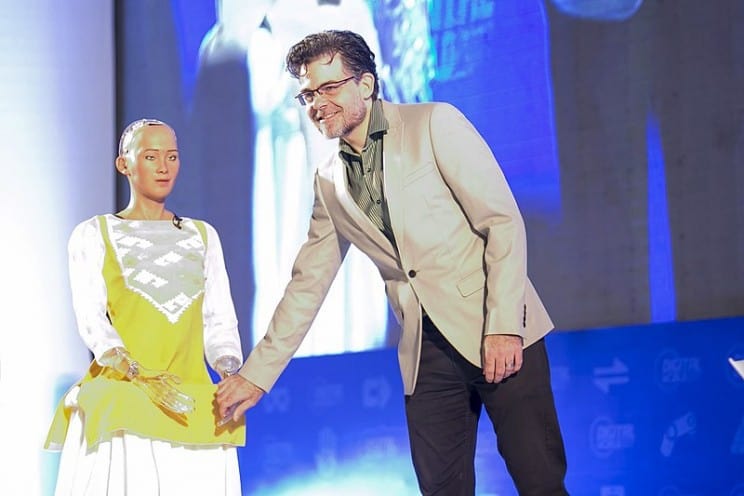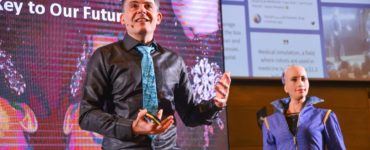August 12, 2018
Originally published by Interesting Engineering, written by Christopher McFadden
Interesting Engineering — The future might look very different from today if any of these 15 engineers have anything to say about it. They have been working tirelessly to bring the products of their imagination into reality.
The following group of people is just some of the many hardworking and talented engineers around the world. This list is by no means exhaustive and is in no particular order.
1. Minjuan Zhang: The Engineer Making Cars Invisible
Minjuan and her team at Toyota are working to try to provide unobstructed views for car occupants of the future. To this end, they are attempting to build an ‘invisibility cloak’ for future Toyotas.
Zhang is a lifelong Toyota engineer and material scientist – she also holds at least 50 patents. Her main research focus is studying how light interacts with materials.
In 2016 her research yielded some interesting results that enabled her to develop a new paint color called “Structural Blue.” By studying how light interacts with butterflies, the scientist invented the new paint that provided the unique deep blue color offered in the 2017 Lexus LC 500 series.
Zhang and her team are currently trying to find a way to render the internal structures of cars ‘invisible’. The solution will involve the clever use of lenses and polarised light.
“We could still keep the same structures, but we could make them invisible so we could improve the view of the driver,” Zhang explains.
This technology is still very much a guarded secret by Toyota. If successful, it could be the future of all vehicles. If it also proves popular, it could become the standard for all modes of transportation.

2. Carmel Majidi: The Engineer Hoping To Make Self-Healing Machines
Carmel Majidi (Associate Professor of Mechanical Engineering) and engineers at Carnegie Mellon University are currently working on a method to allow machines to repair themselves like living organisms. Their material is able to repair itself once it has suffered severe mechanical damage.
The material is made from liquid metal droplets that are suspended within a soft elastomer. Once damaged, the droplets rupture like blood in an animal to form new connections with neighboring droplets to reroute electrical signals.
“Other research in soft electronics has resulted in materials that are elastic and deformable, but still vulnerable to mechanical damage that causes immediate electrical failure,” explained Carmel.
“The unprecedented level of functionality of our self-healing material can enable soft-matter electronics and machines to exhibit the extraordinary resilience of soft biological tissue and organisms.”
3. Zhong Lin Wang and Georgia Tech Are Making Power Generating Cloths
Zhong Lin Wang (Regents professor in the Georgia Tech School of Materials Science and Engineering) and other researchers at the Georgia Institute of Technology are currently investigating the possibility of making a motion-generating energy harvesting textile. Not only that but their textile, once optimized, should also be bi-generational allowing it to harvest energy from solar generation.
Motion-based electrical generation will be achieved using triboelectric nanogenerators. These work by combining triboelectric effects with electrostatic induction to generate electricity from any movement that agitates the textile.
The textile could have perfect applications as clothing but also in other fields that could take advantage of its bi-generational potential from wind and solar at the same time such as ships sails or energy harvesting flags.
“This hybrid power textile presents a novel solution to charging devices in the field from something as simple as the wind blowing on a sunny day,” explains Zhong Lin Wang.

4. David Hanson: The Engineer Behind the World’s First Robot Citizen
Dr. David Franklin Hanson Jr. is the man behind one of the most advanced AI androids ever built – Sophia. Activated in 2015 ‘she’ was designed and built by his Hong Kong-based startup Hanson Robotics.
Sophia made her debut at South by Southwest Festival in March of 2016 in Austin, Texas and has since become one of the most recognized robots of all time. Sophia is revolutionary in various ways but none more significant than ‘her’ being awarded Saudi Arabian citizenship in 2017.
Sophia has since become a highly popular public speaker, especially for business, and has met face to face with many influential decision makers across many industries. She has also been named the United Nation Innovation Champion by the United Nations Development Program (UNDP).
In this role ‘she’ will have an official role in working with the UNDP to promote sustainable development and safeguard human rights and equality.

Image Sources: Lexus, Carmen Majidi, Georgia Institute of Technology, Sazzad Hossain/Wikimedia Commons






Recent Comments